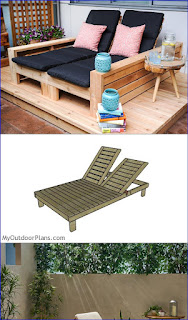Build the Ultimate Aquarium Cabinet: A Comprehensive Guide to Design and Construction
Dreaming of a sleek, functional aquarium cabinet that seamlessly blends with your home décor while providing ample storage for all your tank essentials? Stop dreaming and start building! This guide provides detailed plans and considerations for crafting a custom aquarium cabinet that's as beautiful as it is practical. Forget flimsy, off-the-shelf options; let's create a piece of furniture worthy of your aquatic masterpiece.
Planning Your Aquarium Cabinet: Size and Style
Before diving into construction, meticulous planning is key. Begin by measuring your aquarium's dimensions precisely. Your cabinet must not only accommodate the tank's weight but also provide comfortable access for maintenance. Consider the height: do you prefer a taller cabinet for ample storage or a shorter one for a lower profile? Think about the style you envision – minimalist modern, rustic farmhouse, or something entirely unique? Sketch your design, paying close attention to the placement of doors, shelves, and drawers. Consider incorporating features like pull-out trays for easy access to filters or a dedicated compartment for your testing kits.
Choosing the Right Materials
Selecting durable and moisture-resistant materials is crucial for the longevity of your cabinet. Plywood is a popular choice for its strength and stability. Look for marine-grade plywood, specifically designed to withstand humidity. Consider using a melamine-coated MDF for the exterior for easy cleaning and a sleek finish. Ensure all wood is properly sealed with a waterproof sealant to prevent warping and damage from spills. Choose sturdy hinges, handles, and drawer slides that can support the weight of your supplies. Don't underestimate the importance of high-quality hardware – it makes all the difference in the functionality and lifespan of your cabinet.
Construction: A Step-by-Step Guide
Now for the exciting part – building your cabinet! Begin by cutting your plywood or MDF to the precise dimensions you've planned. Use a high-quality saw for clean, accurate cuts. Assemble the cabinet's frame using wood glue and screws. Reinforce the corners for extra strength and stability, especially crucial given the weight of the aquarium. Remember to account for the added weight of the water and substrate when calculating the load-bearing capacity of your structure. Precise measurements and careful assembly are key to building a sturdy and safe cabinet.
Adding Doors, Drawers, and Shelves
Once the main frame is assembled, install your doors, drawers, and shelves. Pre-drill pilot holes before screwing to prevent the wood from splitting. For the doors, ensure your hinges are securely attached and allow for smooth opening and closing. Consider using soft-close hinges for a more refined finish. Install drawer slides that are rated for the weight you plan to store. Measure carefully when positioning shelves to maximize storage space and accommodate different sized equipment. Consider installing adjustable shelves for ultimate flexibility.
Finishing Touches and Safety Considerations
Once the cabinet is constructed, sand all surfaces smooth and apply your chosen finish. Remember to apply a protective sealant to protect the wood from moisture. Finally, carefully position your aquarium on the completed cabinet. Always ensure the cabinet is level and sturdy before placing the tank on top. Regularly inspect the cabinet for any signs of wear and tear, and address any issues promptly to maintain the safety and structural integrity of your entire setup. Enjoy your custom-built aquarium cabinet and the pride of craftsmanship it represents.
Essential Safety Tips:
- Always double-check your measurements and calculations before cutting wood.
- Use appropriate safety gear, including safety glasses and gloves, throughout the construction process.
- Ensure the cabinet's weight capacity exceeds the combined weight of the aquarium, water, and stored supplies.
- Regularly inspect the cabinet for any signs of damage or instability.





















